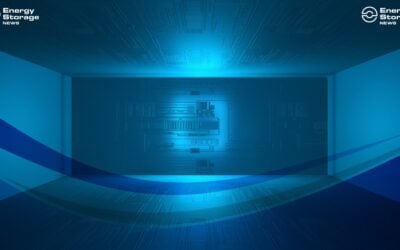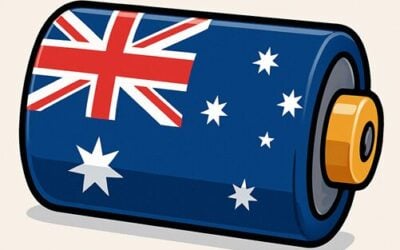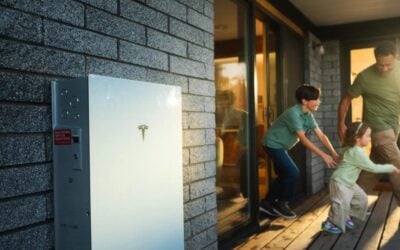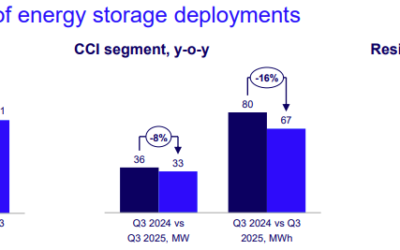
Australia’s battery storage market had a record-breaking year in 2023 across utility-scale, residential, and commercial and industrial (C&I) segments.
According to figures published this week by solar PV and energy storage market consultancy Sunwiz, 2,468MWh of energy storage was deployed in Australia, with numbers in every segment surpassing the highest annual figures on record.
For context, 2021 was the first year ever that total installations had exceeded 1GWh, with an estimated 1,089MWh recorded by Sunwiz.
Grid-scale projects (>10MWh) dominated the market, with 1,410MWh brought online during the year, but 656MWh of residential installs and 402MWh of C&I joining the National Electricity Market (NEM) also made significant contributions, with their respective best-ever tallies.
Try Premium for just $1
- Full premium access for the first month at only $1
- Converts to an annual rate after 30 days unless cancelled
- Cancel anytime during the trial period
Premium Benefits
- Expert industry analysis and interviews
- Digital access to PV Tech Power journal
- Exclusive event discounts
Or get the full Premium subscription right away
Or continue reading this article for free
Furthermore, Sunwiz said that while it had found more than 1,900MWh of utility-scale battery energy storage system (BESS) projects in construction in Australia as of the end of 2022, that number had leaped to more than 12GWh by the end of last year.
While those projects will not all be completed and brought online during 2024, Sunwiz said it is confident this will be another record-breaking year for these so-called ‘big batteries.’ The consultancy and analysis group’s numbers are slightly higher than those released by the Clean Energy Council (CEC) trade association, which said in its own annual report that it counted around 11GWh under construction by the end of 2023, but nonetheless, again, a record-breaking year ahead looks more than likely.
The consultancy expects 23% growth from 2023-2024 in the residential segment, which has grown 21% year-on-year. It predicts that about 70,000 home storage systems will be installed over the 12 month period totalling about 788MWh.
The addition of community battery—or ‘neighbourhood battery’ projects around Australia, classified within the C&I segment—will help drive a 50% growth in C&I installs. After years of slow growth, the C&I market has “now become material,” Sunwiz said, with 600MWh forecast for 2024.
Stressing that it remains “our best estimate,” Sunwiz said utility-scale could add about 4GWh in 2024, although the company said there might be hold-ups relating to grid connection.
Overall, hinged largely on how much grid-scale storage can come online on time, Sunwiz forecasts estimated total installations at 5,388MWh across all scales for 2024.
Nearly 6GWh of cumulative installs in Australia by end of 2023
In all, Sunwiz called 2023 “the year of the big battery,” with government tenders a major factor. This is again likely to grow as a driver across Australia as the Capacity Investment Scheme (CIS)—coordinated federally and administered state-by-state—solicits an initial 6GW of energy storage to back firm renewable energy this year, pursuing a total of 32GW by 2030.
The first tranches of tendering under CIS took place this year in Victoria and South Australia, awarding long-term energy service agreement (LTESA) contracts to six projects, including three large-scale BESS and three aggregated virtual power plants (VPPs).
Some interesting trends were observed in the market. These included increase in interest in electrification at mining sites, expanding investment in local battery production and the supply chain, pilots and tests for non-lithium technologies, particularly vanadium flow batteries, as well as increased attention for battery reuse, recycling and repurposing.
As Energy-Storage.news readers will know, 2023 also saw Australia’s first-ever tender for long-duration energy storage (LDES), which was held in New South Wales (NSW) and won by RWE with an 8-hour lithium-ion (Li-ion) BESS project, Limondale. This was followed by a further 4GWh of LDES resources winning another NSW tender in December, including a large-scale advanced compressed air energy storage (A-CAES) project and other 8-hour Li-ion projects.
In all, Australia’s total cumulative installed battery storage capacity by the end of 2023 was counted at 5,966MWh. Interestingly, residential still made up the largest share of that, with 2,770MWh accounting for 46% of the total, while utility-scale had a 44% share with 2,603MWh online and distributed C&I taking just a 10% share, with 593MWh.
Energy-Storage.news’ publisher Solar Media will host the 1st Energy Storage Summit Australia, on 21-22 May 2024 in Sydney, NSW. Featuring a packed programme of panels, presentations and fireside chats from industry leaders focusing on accelerating the market for energy storage across the country. For more information, go to the website.





